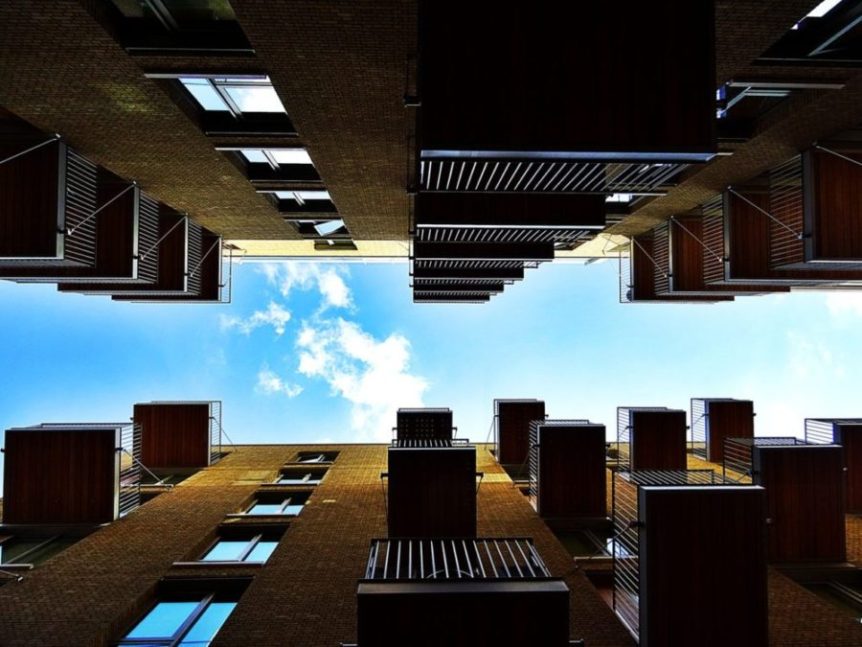 So, you’ve moved into an apartment and would like to set up your very own music studio… It is totally achievable, but not quite as simple as moving into a house setup. Apartments come with the inherent factor of neighbors at a close range. And this is one issue you’d need to manage as a producer. How to have an Apartment Music Studio Without Annoying your Neighbors?
So, you’ve moved into an apartment and would like to set up your very own music studio… It is totally achievable, but not quite as simple as moving into a house setup. Apartments come with the inherent factor of neighbors at a close range. And this is one issue you’d need to manage as a producer. How to have an Apartment Music Studio Without Annoying your Neighbors?
In this article, we take a look at all the tips you need to know in order to make an apartment music studio work.
How to Set Up an Apartment Music Studio Without Annoying Your Neighbors
1. Soundproofing
The reality is, in already built apartments, soundproofing won’t always be the simplest of tasks, or even possible sometimes. Generally, truly effective soundproofing would involve building a decoupling structure (like a room within a room), to isolate internal sound. This is typically a costly task and you may be limited by the restrictions of your building. (To learn more about soundproofing in detail, check out Soundproofing your Home Music Studio on a Budget).
However, there are some workarounds you can apply in order to have an apartment music studio without annoying your neighbors.
- If you’re still looking for an apartment, ensure that all walls are concrete/brick. This type of wall insulates sound really well.
- You may consider installing Rockwool to your walls for added insulation.
- Consider placing your studio monitors and mixing desk against the wall facing the outside of the apartment. This way, you’ll trigger fewer resonances towards your neighbors.
- You should also consider adding mass to your doors if they are hollow. To do this, an adhesive vinyl material is used to dampen the door. (A great example of this would be the BRB Mass Loaded Vinyl ).
2. Acoustic Treatment
Acoustic treatment and soundproofing are not the same things. They serve two completely different functions. While soundproofing manages noises escaping the room (and vice versa), acoustic treatment deals with the absorption of excess resonances inside the room. Using foam panels and bass traps are imperative to a music studio, however, they won’t do much to prevent sounds from affecting your neighbors.
That said, applying the acoustic treatment, especially a good amount of foam/fiberglass paneling could assist to some degree. To learn more about Acoustic Treatment in detail, have a look at this article on How to Set Up Acoustic Treatment in your Home Music Studio.
3. Isolate Your Studio Monitors
In any studio setup, it always ideal to isolate your studio monitors from surrounding surfaces. This would definitely apply to having an apartment music studio without annoying your neighbors. Monitor isolation refers to adding a fair distance between the nearby walls and the monitor speakers. It also refers to isolating the monitors from the surface onto which the monitors will be placed. This can be executed using either a suspension method, or adding padding beneath or around the speakers.
Monitors essentially emit vibrations not only through the woofers, but also resonating through the body of the device. To this impact on your neighbors, consider the following:
Monitor Isolation Pads – The function of desktop pads for your studio monitors is basically to decouple the monitors from the desk. This would prevent the additional resonances form reflecting from the desk.
Monitor Desktop Stands – Desktop stands, on the other hand, raise the monitors further off the desk surface. These are more suitable for if your seating is in a more elevated position.
Monitor Stands – This is the ideal situation. Monitor stands are the best way to elevate your speakers. They also have the benefit of more placement precision and elevate your monitors away from the ground altogether. When considering how to have an apartment music studio without annoying your neighbors, this has the added benefit of eradicating bass resonances that could be felt by the neighbors below you. This way, you also eradicate the impact of resonances affecting your neighbors below your apartment.
4. Stick to Monitors with a Smaller Woofer Element
Another key tip to having an apartment music studio without annoying your neighbors is to simply use monitors that produce less bass. For smaller bedroom studios in an apartment, you ideally want to look at monitors that are around 5″ to 8″ in terms of the woofer element. Try to stick to these within parameters, especially if your studio is fairly small in size. This is because a larger studio monitor set would simply producer too much resonance and bass, which would inevitably be felt by your neighbors.
A great example of these to look at would be the KRK Rokit 5″ monitors on Amazon. (For a detailed guide on suggested studio monitors for home studios, check out this article on the Best Studio Monitors for Home Music Studios).
5. Use Headphones
Professional music studios encourage the use of monitor speakers to the maximum. However, headphones will always come into play in the studio environment. In smaller apartment studios, however, sometimes the better route to take is to simply make use of headphones for mixing. Or at least to lessen the frequent use of monitors by using your headphones. This way, eradicated any excess noise from affecting your neighbors.
Professional studios utilize both in conjunction. But in a smaller apartment with neighbors to bear in mind, you may just have to the learn art of mixing on headphones. Mixing on headphones in comparison to monitors speakers is, in fact, a little more of a complex procedure than you may think. But totally achievable. A really great article to check out is Are Monitors Better than Headphones for Mixing? This article details all the tips you need to know about mixing headphones.
6. Manage the volume and bass levels
This may seem like an obvious aspect, but worth the mention nevertheless. This applies, more so, if you choose to monitors over headphones most of the time. Try to work at moderate volume levels during your mixing process. Most monitors speakers also come with a bass adjustment setting.
Do this not only has the benefit of reducing the ruckus for your neighbors, but you reduce the surplus of resonances in the room. Smaller studio areas are typically worse off when it comes to sound reflections. So in addition to having acoustic treatment and soundproofing, work with the right levels.
7. Use an Electronic Drum Kit
This point may not apply to everyone, but it is a facet to consider when setting up an apartment music studio without annoying your neighbors. You may get away with recording live aspects such as vocals or acoustic guitars in your home studio. But we all know how loud an acoustic drumkit would be.
An electronic drum kit not only has the benefit of volume control through your monitors, but you can also record with headphones attached. This way, no sound escapes your apartment studio.
8. Work Out a Schedule
 If you’re really going to be working on your home studio extensively, you may have to consider speaking to your neighbors about it. Often, the daytime is better for recording and mixing since people would typically be out during this time. However, understandably, working around the issue of neighbors when your own time is restricted may be a difficulty.
If you’re really going to be working on your home studio extensively, you may have to consider speaking to your neighbors about it. Often, the daytime is better for recording and mixing since people would typically be out during this time. However, understandably, working around the issue of neighbors when your own time is restricted may be a difficulty.
So while it is best to work schedule for your studio time, try to implement all the tips provided in this list to ease the effects on your neighbors.
That concludes this set of tips on setting an apartment music studio without annoying your neighbors. Another great related article worth checking out is Best Studio Monitors Setup for Bedroom Music Studios.
